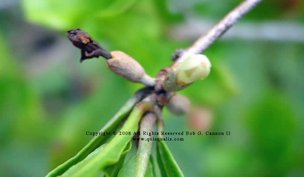
|
Two
Miracle Fruit Flowers. The one on the left is about 3 days old and has
darkened with age. The flower on the right opened the day that the
photo was taken and is a creamy white. If you look closely you can
see the stigma or female part of the flower just showing in the small
opening at the tip of the flower. Miracle Fruit flowers only open this
small bit unlike more familiar flowers.
 |
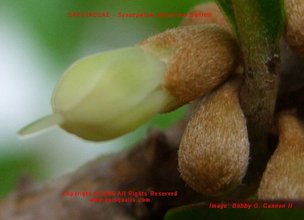 |
These
two flowers are both young and the side view makes it a bit easier to
see the stigma where it emerges from the center of the Miracle Fruit
Flower. This characteristic partial opening of the flower is common in
other members of the Sapotaceae such as the sapodilla.
 |
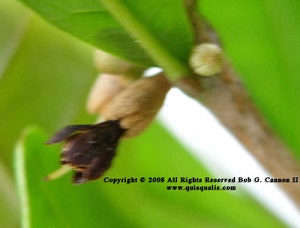 |
This
older flower has mature petals that have turned dark red and shrunken
back some so that the stigma is more exposed. The tip of the stigma
appears brown and dry and it has passed the receptive stage for pollen.
A good image showing three mature flowers and a bud is located here:
http://www.quisqualis.com/mirfrtdmc1b.html
 |
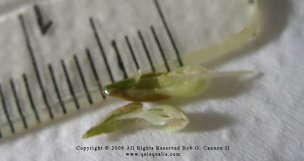
|
I
wanted to get an even closer, more detailed look at a Miracle Fruit
flower so dissection was necessary. You can see just how small this
flower is against the mm scale of the ruler. The style and part of the
ovary have broken loose and thus the stigma is extended unnaturally far
from the flower.
 |
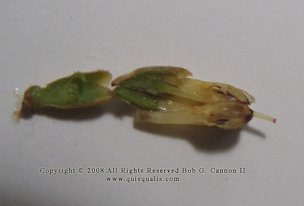 |
Here
you can follow the stigma down the style to the ovary which develops
into the fruit. The ovary has been split but the detail is insufficient
to show the developing seed and flesh. To the right you can see the
pollen bearing anthers atop short filaments.
 |

|
This is the same image as above with the
contrast adjusted to pull out a bit more of the flower's details.

|
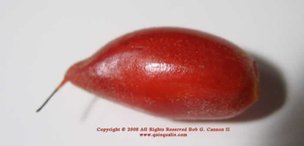 |
Unlike
the more perfect fruits illustrated in the article at:
http://www.quisqualis.com/mirfrtdmc1a.html
this fruit is misshapen and this may be due to improper or incomplete
pollination. The reason for this is difficult with small flowers and
fruit. We ate the fruit and the full taste changing affect was present.
You can also see that the pistil has remained attached to the fruit on
the left side of the image.
 |
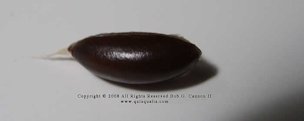 |
Just
as the fruit was not quite perfectly shaped the seed is also a bit lop
sided. It does have the came sheen and color of any seeds in the
Sapotaceae family. To discover if it is viable it was planted and with
luck will soon produce a seedling.
 |








